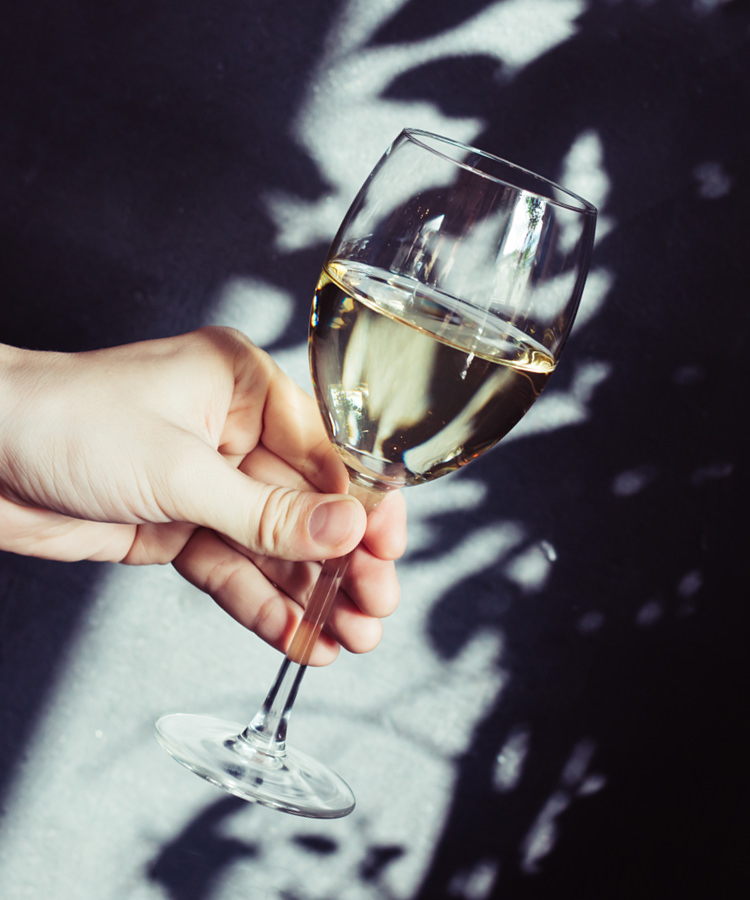Poor, poor Chardonnay. Despite being the grape behind the world’s most coveted wines — Champagne and Burgundy — it’s also the most maligned vitis vinifera variety on the planet. It’s even more maligned than Merlot.
In my mind, the ABC or “Anything But Chardonnay”school of wine-drinking isn’t just silly, it’s downright wrong. Though American store shelves were once filled with clunky bottles that only smelled like oak and tasted worse, that isn’t the case today. Contrary to popular belief, or what visiting Napa Valley might indicate, Chardonnay is arguably the most versatile white grape out there, and there’s a bottle for every palate.
Racy, featherweight Chablis from France and oaky, voluptuous California Chardonnays bookend the spectrum. But there’s quite literally an in-between bottle for every palate (even if you normally drink red wines).
Don't Miss A Drop
Get the latest in beer, wine, and cocktail culture sent straight to your inbox.On one hand, France is the pillar of lightness, and their Chardonnays (excluding the Burgundy that 99 percent of us can’t afford) epitomize the light, zesty style. Grown in a climate most of us would consider chilly, the grapes retain a high level of acidity; they are tart by table grape standards. That translates into lightweight wines that are complex and interesting without being heavy. These bottles, often labeled simply “Chablis” or “Bourgogne Villages” are often delicate, lemon-scented, and driven by stony minerality — like the perfect lemonade, enjoyed on a riverbank.
Napa Valley, and most Chardonnays from California, embody the opposite: over-the-top roundness, and full-bodied, oak-driven bottles that are opulent, ostentatious, and irresistible with roasted poultry and/or Cheez-Its. In the Golden State, temperatures are far warmer than those in Europe, leading to extremely ripe, sugary grapes. The wine equivalent is flavored with golden apple, pineapple, and even nutty qualities instead of fragile citrus fruit.
What makes Chardonnays so vastly different when it comes to flavor is linked to the chemistry of the grape. Unlike many white grapes that have distinct, recognizable flavors across regions (think: the gasoline-like aromatics of Riesling, or perennial tropical tones of Sauvignon Blanc) Chardonnay is incredibly malleable when it comes to flavor and body. In a sense, it’s more responsive to how it’s treated in the vineyard and then in the winery, like a blank canvas for winemakers.
For example, wherever Chardonnay is grown, it soaks up the flavors of oak like a sponge. It’s oak barrels that give many Chardonnays their butter-bomb quality, as well as vanilla, cinnamon, and clove on the palate. Those without oak, or that utilize old barrels devoid of flavor compounds, retain their lightness, showing off fruity flavors instead of baking spices and toasty aromatics.
Chardonnay is also easy to grow and amenable to winemaking techniques. Some of these, like the malolactic fermentation, make wines taste creamy. Using oak or stainless steel vessels for aging gives a huge variety of finished wines. Sometimes, it just takes a few tries to find the right bottle. If you’re reading this, it’s a challenge you’re already up for.
The trick to finding your perfect Chardonnay is looking between the outliers on the Chard spectrum. Though some of these areas might seem “lesser-known,” Chardonnay is easy to grow and exceptional quality can come from almost any region. Plus, areas like Oregon, Washington, Australia, and even Chile produce lovely bottles that are often easier on the palate and the wallet than more classic Chardonnays.
Oregon is a shining example of middle-ground for Chardonnay. Their climate is warmer than many parts of France, but slightly cooler than California, which yields bottles that are ripe, but more restrained than those from its southerly neighbor. The result is stellar bottles in the $15-$30 range that show creamy but not heavy flavors.
Classic Willamette Valley Pinot Noir producers like Ponzi and Eyrie produce top-notch examples with aromas of pear, golden apple, and fresh herbs, but newer, smaller wineries are pumping out bottles that are bucking the trend. Goodfellow Cellars and Gran Moraine are excellent bottles that are so solidly medium-bodied and fresh, you’d be tempted to think they’re a different grape.
Australian Chardonnay offers another perspective, and it’s not Yellow Tail. While closer to California in style, many of these wines come from cool regions like the Margaret River and Hunter Valley, where winemakers are focusing on finesse instead of bold, buttery flavors.
Today, I even tasted a German Chardonnay and was surprised yet again. From razor-sharp and acidic bottles to luxurious, oaky Chards, it’s silly to say you hate this grape when it can be anything. You just haven’t tried the right one yet.
